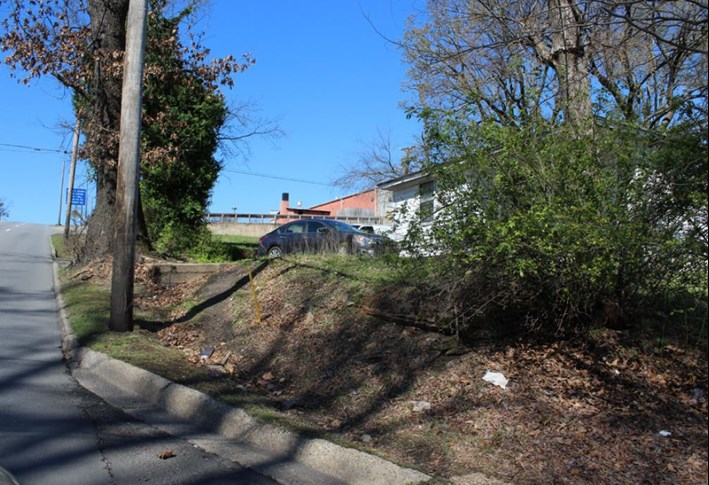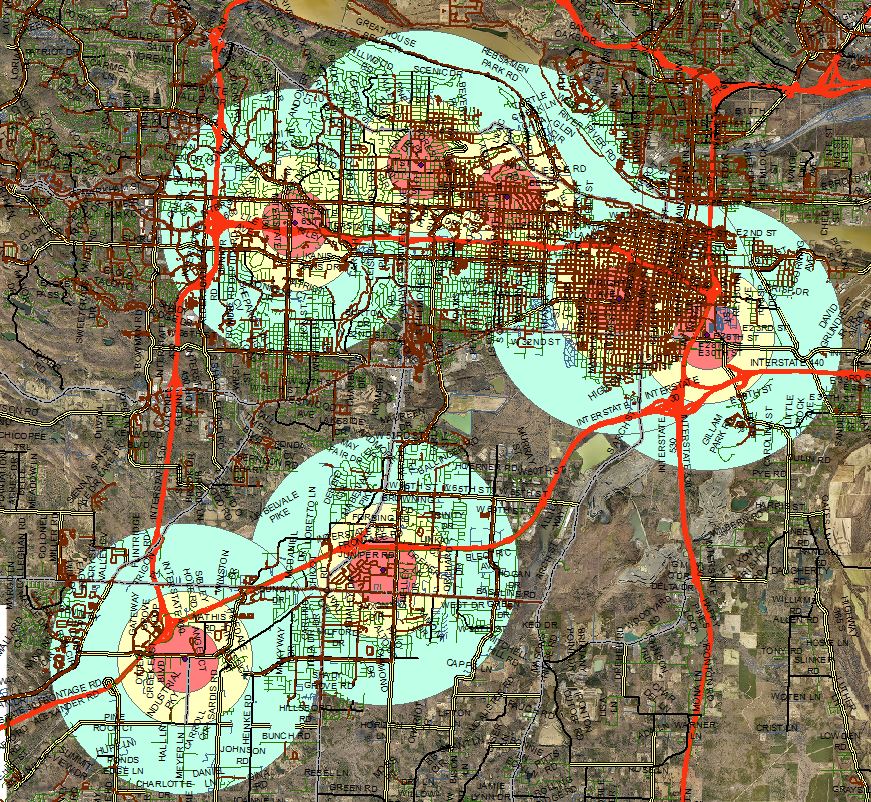Safe Routes to School Facilities
Little Rock's Walkability
In 2015, the City of Little Rock made a commitment to make our streets safe and welcoming to pedestrians as a mode of transportation by passing the Complete Streets Ordinance. The City's Board of Directors have made "striving to improve vehicular and pedestrian safety" a "must-do" policy statement.
We have work to do to achieve these goals. In Metroplan's review of 52 similar communities, our "walkability" score ranked last among them (pg. 5). Only 29% of our streets (Pulaski County) have sidewalks (Table 4-2). In Smart Growth America's 2016 Dangerous by Design study, the Little Rock metro area was identified as the 14th most dangerous place to walk in the United States. These challenges took decades to create and they won't be fixed overnight.
Safe Routes to School
Creating safe routes for students to walk and bike to school is critical. Why? As Central High School student Ava Horton states:
"Walking everyday for at least 30 minutes a day is proven to reduce chronic diseases [including obesity]; however, many streets in Little Rock have no sidewalks, and if there are sidewalks, they are in very bad condition and there are not any crosswalks [Fig. 1]. Through my research I found that children who walk to school can experience many learning benefits such as improving a child's concentration, mood, alertness, and enhances their memory and creativity."

Figure 1. This section of W. Roosevelt Road illustrates the challenge a Horace Mann Middle School student faces walking to school. Photo by Ava Horton.
Ava also identified a critical equity issue:
"Then I found that you can not ride the bus to and from school if you live 1 mile away for elementary school and 2 miles away for middle school and high school for the Little Rock School District. This was the radius I used to document the sidewalks. I drove around and took pictures of sidewalks near middle schools and gathered the pictures in a report."
So transportation to school is provided for some, but if students live "too close" to school, they must get to school on their own (Fig. 2). Many parents likely pick up and drop off their children in an automobile, which can be challenging for all parents, especially those with students at different schools. But what if a parent(s) do not own a car due to income, handicap or some other reason? What if the parent(s)' job(s) do not allow them to consistently drop off and pick up their children at an appropriate time?
Presumably the proximity provision and the difference between elementary and middle/high school distance in that provision is so that the child can walk or bike to school (i.e. the community is more comfortable with middle/high school students biking on city streets than elementary students). The safety of this policy hinges on the safety of the facilities between the student's home and school. Of course, the absence of a safe and reliable means to get to school can result in truancy, social upheaval, learning challenges/poor grades, injury, and could ultimately result in poor adult outcomes.

Figure 2. Locations of the seven LRPS Middle Schools noted by Ava Horton surrounded by a sea green two-mile circle, a yellow one-mile circle, and a salmon half-mile circle. Brown lines are existing sidewalks and visible green lines are streets without existing sidewalks. No bus service for the middle school at the center is provided within the circles.
Prioritizing Safe Routes to School Projects
Many Little Rock streets do not have sidewalks; installing sidewalks is time-consuming and expensive (Fig. 2). Addressing this gap in our transportation network will take years, perhaps decades, to address. Projects must be prioritized to have the most impact and to serve those who need them most. The following could help prioritize projects:
1) Proximity to Public School: LRPS bus service does not serve elementary school students who live less than a mile from their school and middle and high school students who live less than two miles from their school. In order for this to be a safe and equitable policy, students must have safe and convenient pedestrian and/or bike routes from their homes to school.
Two-Mile Buffer: Within two miles of a middle or high school, bike facilities might be a high priority and pedestrian facilities a medium priority (with the idea that students will likely choose to bike over walk if they live farther than one mile from school).
One-Mile Buffer: Within one mile of a middle or high school, bike and pedestrian facilities might high priorities (because students living within a mile of school might more-often choose to walk rather than bike, but students coming from the two-mile buffer need to get to school). Within one mile of an elementary school, priority for bike facilities should be medium and pedestrian facilities should be high (because elementary school students might more often walk than bike).
Half-Mile Buffer: Within half a mile of a middle or high school, priority for bike facilities should be high and pedestrian facilities should be very high (because a pedestrian facility very close to the school would serve a greater percentage of its students). Within half a mile of an elementary school, priority for bike facilities should be medium and bike facilities should be very high.
2) Short Connections/Repairs vs. Long Segments: Making short connections and repairs to sidewalks has the potential to create intact pedestrian corridors with mostly existing facilities. These smaller, less expensive projects can have as much value as creating an entire stretch of sidewalk for a fraction of the cost. Identifying and creating these short, high value connections between existing facilities should therefore be a Phase One in fixing our pedestrian transportation system.
3) ADA-Compliance: When repairing and/or creating our pedestrian transportation system, we should do so in ways that are ADA-Compliant. As in Point #2, small fixes to existing facilities can make sidewalks a transportation corridor that works for people in wheelchairs, people with sight and hearing disabilities, and people pushing strollers, wagons, or carts.
4) Socioeconomic Equity: While bicycle and pedestrian connectivity from home to school is important in all Little Rock communities, it is critically important in low-income communities. These are the communities in which families may struggle the most to get their children to school in an automobile due to higher concentrations of single parent homes, homes in which parent(s) have jobs with inflexible hours, non-traditional hours, work multiple jobs, or homes that do not own multiple automobiles.
5) School/Community Input: The process of creating a new Master Plan including bike and pedestrian modalities will include several opportunities for public input. However, when choosing projects to create safe routes to a specific school, students, school officials, residents, and CLR Planning and Public Works should meet and discuss the most critical improvements to pedestrian and bike corridors around that school.
Specific Middle Schools and Challenges
In April 2017, Ava Horton contacted BikePed Little Rock concerned about safe pedestrian routes to Horace Mann, Dunbar, Pulaski Heights, Forest Heights, Henderson, Cloverdale, and Mabelvale Middle Schools. Below are the middle schools and challenges highlighted in Ava's report. Click the buttons below to learn about the route challenges for specific schools and what you can do to make getting to school safer for Little Rock children. If you have a concern about a school not listed below, feel free to borrow any language you would like and modify to fit your needs. If you have pictures of challenges to the route to a certain school that you would like to share, email to jlandosky@littlerock.gov in addition to submitting your Infrastructure Request to PublicWorks@littlerock.gov.




 Trash & Recycling
Trash & Recycling
 Online Payments
Online Payments
 City Documents
City Documents
 Parks
Parks
 Traffic Court
Traffic Court
 E-NEWS
E-NEWS
 EXPLORE
EXPLORE
 NEWS
NEWS
 TRANSLATE
TRANSLATE
